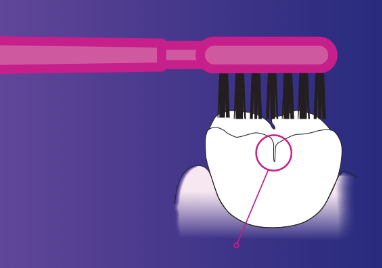Teilnahmebedingungen für das Gewinnspiel “Brain Boost Event 2025 – Gewinne 2x Teilnahmeplätze für dich und deinen Lieblingskollegen in Seefeld”
Teilnahmebedingungen:


Why you should give sealants your seal of approval – and use them more regularly in your office.
Despite substantial evidence showing that sealants are effective in preventing and even stopping non-cavitated pit-and-fissure carious lesions – and the fact that they’re approved by both the American Dental Association and the American Association of Pediatric Dentists – this simple treatment is still widely underused.
Why? The truth is that a few common misconceptions could be standing in the way of a quick, safe, effective, minimally-invasive treatment – and a lot of healthy smiles.

If you use proper technique and ensure there are no voids after curing, sealants will not leak!
However, sealants do need touch-ups now and then. Because they’re often placed on the most hardworking teeth in the mouth, they go through a lot of normal wear and tear that may need some maintenance. You can think of sealants as similar to paint on a well-used car – you can’t expect it to stay in perfect shape forever, and you may need to do periodic touch-ups to prevent rust or avoid more elaborate repairs down the line. But needing a bit of maintenance doesn’t negate its benefits!

If applied properly, sealants can actually prevent decay from happening in the first place! For caries to form, bacteria need to accumulate on teeth. These bacteria are easily removed from smooth surfaces with regular brushing – but tend to stick around in difficult-to-clean areas such as grooves, pits and fissures. However, if these nooks and crannies are sealed up, bacteria and food debris can’t get in. Plus, the resulting smoothed surface is far easier to clean and maintain. Think of it like your kitchen countertops: raw granite collects food debris, oils and spills and is difficult to clean, but add a protective coating and you can easily wipe messes away.

As long as the carious lesion is not cavitated, sealants can stop the decay process. The bacteria that cause caries need fuel to survive and thrive – fuel they get from the foods and drinks we consume. But if bacteria are unable to access this fuel, their process is halted. Just as a flame extinguishes if you remove the oxygen, bacteria can’t grow if you seal off a carious lesion from its food. And that means early decay can’t become a cavity.

While using a bur to clean out and open up pits and fissures before sealant placement is considered standard for many dental professionals, it’s rarely necessary. Just like you wouldn’t want your surgeon to enlarge a cut or remove healthy tissue before stitching you up, why remove tooth structure if you can safely seal it?
Evidence shows that you can safely seal over non-cavitated lesions without removing any tooth structure. In fact, the AAPD advises against any enameloplasty for sealant placement, particularly since once a tooth is cut, it’s more vulnerable to decay.

When placed correctly, sealants can last up to 5–10 years. However, because they’re placed on molars – which go through a great deal more wear and tear than other teeth – sometimes they do wear down, chip or fall off. Thankfully, sealants are easily repaired or replaced. That’s why it’s important to make sealant checks a regular part of routine dental appointments – to make sure there are no gaps in your caries protection.

Applying sealants is actually a very simple process and should only take a few minutes. However, just like with any dental procedure, choosing the right material can make a difference. For example, 3M™ Clinpro™ Sealant goes on pink for easy placement, before curing to a natural-looking white. In addition, it’s engineered to flow easily into pits and fissures for fewer occlusal adjustments – so you can be confident that you’re giving patients the protection they need.
While it can be easy to get bogged down by the myths surrounding sealants, the facts speak for themselves. By utilizing sealants more often, you can give your patients effective caries protection quickly, easily, and painlessly … and set them up for a future of healthier smiles.
Sources

How do you motivate your patients? Discover how caries risk assessments and motivational interviewing tactics can help you connect with…

Caries is a complicated multifactorial disease. In this two-part series, explore how caries risk assessments can help improve evaluation and…